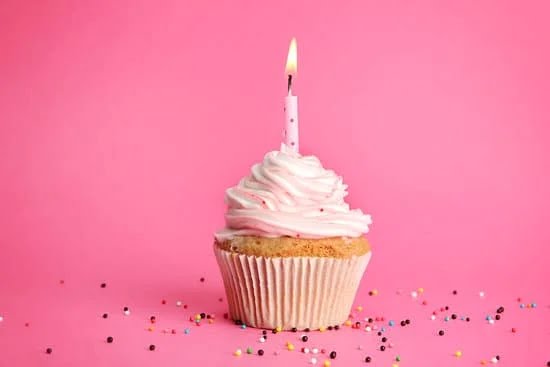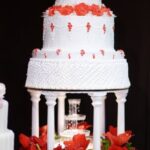Have you ever wondered how many days in advance you can decorate a cake? The timing of cake decoration can significantly impact the final product, making it crucial to understand the factors involved. Knowing how far in advance you can decorate a cake can make all the difference in achieving a visually stunning and delicious masterpiece for any occasion.
When it comes to decorating a cake in advance, there are various factors to consider that can influence the timeline. Factors such as the type of frosting used, the complexity of the design, and the type of cake itself all play a role in determining how many days before an event or celebration you should start decorating.
The type of frosting chosen for a cake is an essential consideration when determining how many days in advance you can decorate. Different types of frosting, such as buttercream, fondant, or royal icing, require different timelines for preparation and application. Additionally, specific decorative techniques like piping, gum paste flowers, and edible glitter can also affect the timeline for decorating a cake. Understanding these factors is key to successfully planning and executing a beautifully decorated cake within the desired timeframe.
Factors to Consider
When it comes to decorating a cake in advance, there are several factors that must be taken into consideration in order to achieve the best results. The type of frosting used, the complexity of the design, and the type of cake all play a significant role in determining how many days in advance you can decorate a cake.
Type of Frosting
The type of frosting used on a cake can greatly influence how far in advance you can decorate it. Buttercream, for example, is more resilient and can typically be applied a few days in advance. On the other hand, fondant and royal icing may require more precise timing due to their tendency to dry out and harden over time.
Complexity of the Design
The complexity of the cake’s design also affects how many days in advance you can decorate it. Intricate designs with delicate details or multiple layers may require more time and precision, whereas simpler designs may allow for more flexibility in terms of preparation.
Type of Cake
The type of cake being decorated is another important factor to consider. For example, a dense and moist chocolate cake may hold up better when decorated in advance compared to a lighter and fluffier sponge cake.
In considering these factors, it’s essential to plan accordingly and make adjustments based on the specific requirements of each individual cake. Understanding these various influences will ultimately lead to successfully decorating a cake in advance without compromising its quality or appearance.
Different Types of Frosting
Buttercream is a popular choice for cake decoration due to its creamy texture and versatility. When using buttercream to decorate a cake, it is generally recommended to do so no more than 1-2 days in advance. This type of frosting tends to have a shorter shelf life compared to others, and its tendency to soften at room temperature can affect intricate designs and piped details if prepared too far ahead.
Conversely, fondant provides decorators with more flexibility in terms of advanced preparation. Fondant-covered cakes can typically be decorated 3-5 days in advance without compromising the overall look and taste. Its smooth surface and pliability make it suitable for intricate designs and sculpted decorations, allowing for ample time to create detailed elements that enhance the visual appeal of the cake.
Royal icing falls somewhere between buttercream and fondant in terms of preparation timeline. It can be used for fine detailing work on a cake, such as lace patterns or delicate piping, and is best applied 1-2 days before serving for optimal results.
| Frosting Type | Recommended Advance Decoration Time |
|---|---|
| Buttercream | 1-2 days |
| Fondant | 3-5 days |
| Royal Icing | 1-2 days |
Decorative Techniques
When it comes to decorating a cake in advance, the specific decorative techniques used can have a significant impact on how many days in advance you can start. Different methods of decorating require different timelines to ensure that the cake looks its best when it is finally served. Here, we will delve into how specific decorative techniques, such as piping, gum paste flowers, and edible glitter, can influence the timeline for decorating a cake.
Piping
Piping is a popular decorative technique that involves using a pastry bag to create various designs and patterns on the surface of a cake. The intricate nature of piping requires precision and care, making it essential to consider how far in advance you can decorate a cake using this technique. In general, cakes decorated with piped designs should ideally be done no more than 1-2 days in advance to ensure that the details remain fresh and vibrant.
Gum Paste Flowers
Creating delicate and lifelike flowers out of gum paste is another common way to adorn cakes for special occasions. These handcrafted decorations add an elegant touch to any cake but also require careful planning. Gum paste flowers are best made ahead of time and allowed to dry completely before being placed on the cake. Depending on the complexity of the floral arrangement, these decorations can typically be made up to two weeks in advance.
Edible Glitter
Adding sparkle and shimmer to a cake with edible glitter is a fabulous way to make it stand out at an event. However, applying edible glitter too far in advance can lead to dulling or loss of sparkle over time as it absorbs moisture from the frosting. It’s recommended to apply edible glitter no more than 1 day before serving the cake for optimal effect.
Understanding how specific decorative techniques impact the timeline for decorating a cake is crucial for achieving the desired visual appeal without compromising on freshness and quality. By taking into account these considerations, you can plan accordingly and ensure that your decorated cake looks stunning when it’s time for celebration.
Storage and Preservation
When it comes to decorating a cake in advance, proper storage and preservation are crucial factors to consider. Depending on the type of frosting, design complexity, and decorative techniques used, the timeline for decorating a cake can vary. Here are some tips on how to properly store and preserve a decorated cake in advance, including refrigeration and freezing options:
- Refrigeration: Cakes that are frosted with buttercream or cream cheese frosting should be stored in the refrigerator. However, it’s important to note that certain decorations, such as fresh fruit or whipped cream, may not hold up well in the refrigerator.
- Freezing: For cakes that need to be decorated several days in advance, freezing can be a viable option. Cakes with fondant or royal icing decorations can typically be frozen without compromising their appearance or taste.
- Airtight Containers: Whether refrigerating or freezing a decorated cake, placing it in an airtight container will help prevent it from absorbing any unwanted odors or flavors from the surrounding environment.
Proper storage and preservation methods can significantly impact the freshness and overall quality of a decorated cake. By considering these options and choosing the most suitable method based on the specific cake design and ingredients used, decorators can ensure that their creations remain visually appealing and delicious when served.
In some cases, refrigerating or freezing a completed cake may not be feasible due to the specific decorative elements involved. In such instances, it’s essential to explore alternative methods for preserving the cake’s freshness while keeping its appearance intact. Professional bakers often employ creative solutions tailored to each unique decorating scenario to maintain both the visual appeal and taste of their creations until they are ready to be enjoyed.
Case Studies
When it comes to decorating a cake in advance, learning from real-life examples can be incredibly insightful. By showcasing both successful and unsuccessful outcomes of cakes that were decorated ahead of time, individuals can understand the importance of timing and proper techniques in cake decoration.
Here are some case studies that illustrate the impact of decorating a cake in advance:
- Successful Outcome: Sarah, a home baker, decorated her daughter’s birthday cake three days in advance using a buttercream frosting. By storing the cake in the refrigerator and allowing it to come to room temperature before serving, the decorations remained intact and vibrant. The use of simple piping techniques and edible pearls added an elegant touch to the cake without compromising its appearance or taste.
- Unsuccessful Outcome: On the other hand, Mark attempted to decorate a wedding cake five days before the event using fondant for intricate details. Despite his efforts to preserve the cake by wrapping it tightly and placing it in a cool environment, the fondant decorations became sticky and lost their shape. The complexity of the design and the type of frosting used led to disappointment as the final result did not meet expectations.
By examining these case studies, it becomes clear that different factors such as frosting type, decorative techniques, and storage methods play a crucial role in determining how many days in advance one can decorate a cake. These real-life examples serve as valuable learning experiences for both novice and experienced bakers, emphasizing the need for careful planning and consideration when preparing decorated cakes for special occasions.
Ultimately, understanding these case studies can help individuals make informed decisions about when to decorate their cakes based on specific circumstances and desired outcomes. Whether it’s for a birthday celebration or a grand wedding reception, the lessons learned from these examples can guide individuals towards successful cake decoration practices.
Professional Insights
When it comes to decorating a cake in advance, professional bakers and cake decorators have valuable insights that can help ensure the best possible outcome. One important factor that they emphasize is the type of frosting being used. Buttercream frosting, for example, is generally more forgiving and can be prepared several days in advance, whereas fondant requires last-minute preparation to maintain its freshness and smooth texture.
In addition to considering the type of frosting, professional bakers also stress the importance of understanding the timeline for specific decorative techniques. For intricate designs that involve piping or delicate sugar work, it’s recommended to decorate the cake no more than 1-2 days in advance to ensure optimal quality and visual appeal. On the other hand, simpler designs may allow for decorating up to 3-4 days ahead of time.
Another crucial aspect highlighted by professional bakers is proper storage and preservation. Regardless of when the cake is decorated, ensuring that it is stored correctly can significantly impact its freshness and taste. Most professionals recommend refrigerating or freezing a decorated cake depending on the specific ingredients used and the timeline until serving.
| Type of Frosting | Recommended Timeline for Decorating |
|---|---|
| Buttercream | Up to 3-4 days in advance |
| Fondant | No more than 1-2 days in advance |
| Royal Icing | 1 day in advance for optimal results |
Conclusion
In conclusion, knowing how many days in advance you can decorate a cake is crucial for achieving the best results. Factors such as the type of frosting, the complexity of the design, and the type of cake all play a significant role in determining the timeline for decorating a cake. It’s important to consider these factors carefully and plan accordingly to ensure that your cake turns out exactly as you envision.
Different types of frosting can have varying effects on the timeline for decorating a cake. Buttercream may allow for more flexibility, while fondant and royal icing may require more precision timing. Similarly, specific decorative techniques such as piping, gum paste flowers, and edible glitter can impact how far in advance you can decorate a cake. Understanding these nuances is key to successful advanced cake decorating.
Furthermore, proper storage and preservation techniques are essential for maintaining the quality of a decorated cake when done in advance. Whether it’s refrigeration or freezing options, taking the necessary precautions will help ensure that your beautifully decorated cake retains its freshness and taste. By paying attention to these factors and following best practices recommended by professional bakers and cake decorators, you can confidently decorate your cakes in advance with stunning results.

Welcome to our cake decorating blog! My name is Destiny Flores, and I am the proud owner of a cake decorating business named Cake Karma. Our mission is to provide delicious, beautiful cakes for all occasions. We specialize in creating custom cakes that are tailored specifically to each customer’s individual needs and tastes.





